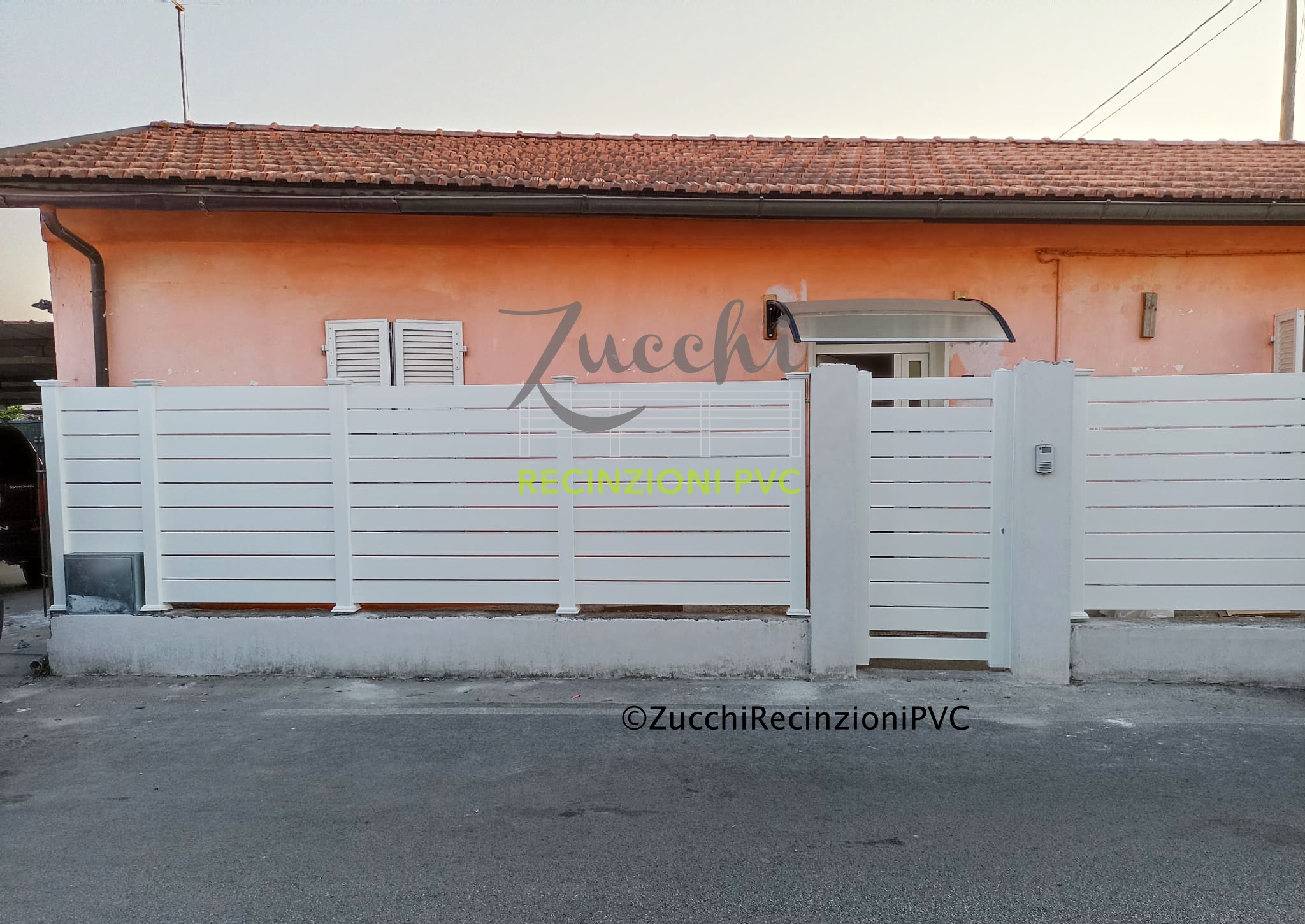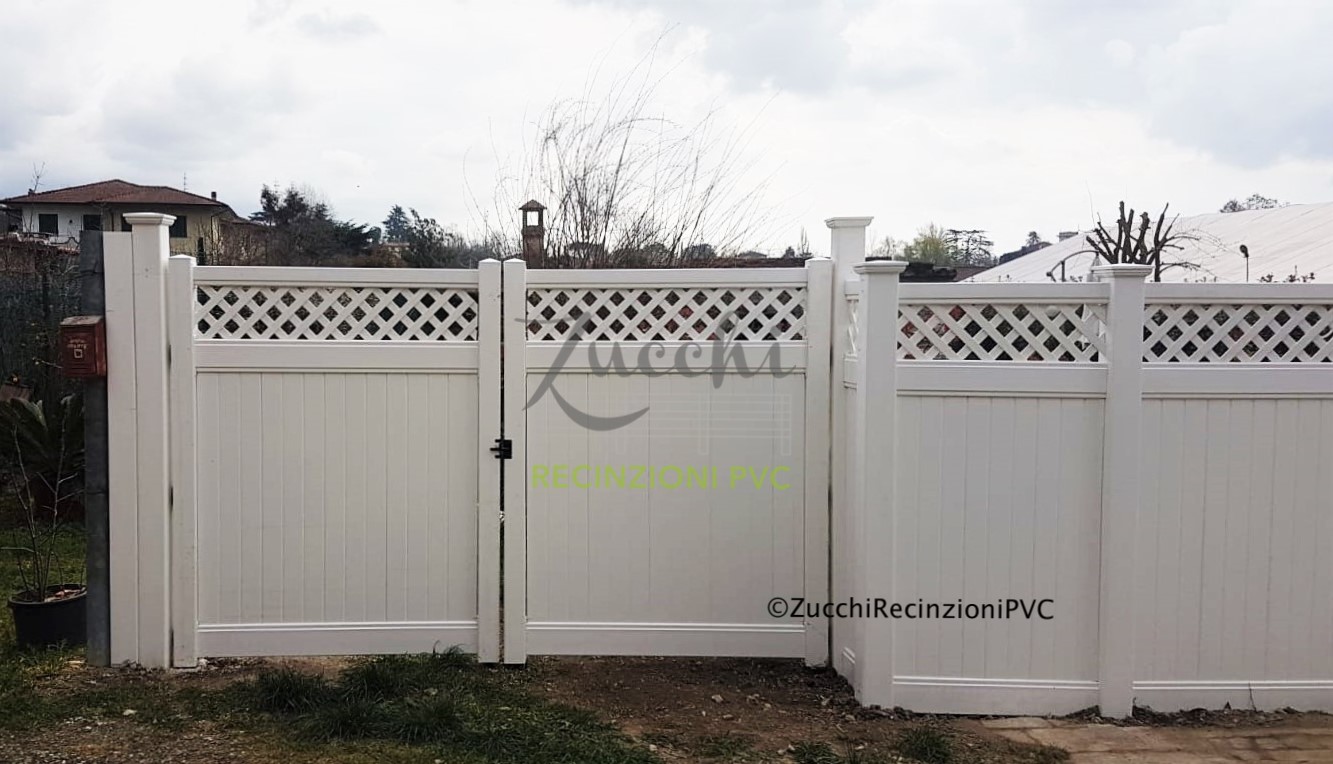Why Choose Modular Components for Your Garden
When you decide to install a fence in your garden, choosing modular components can completely change the game. With DIY, every little detail counts, and modular solutions allow you to handle even the most uneven terrain without stress. Imagine having panels ready to connect like puzzle pieces: quick assembly without headaches. Plus, you can customize length, height, and style without having to buy a whole expensive fence, saving time and money. Modular components are perfect for those who love having total control over their project. It doesn’t matter if your garden has slopes or odd curves: you can combine the modules according to the shape of the terrain, avoiding problems that traditional fences often create. Each piece works like a tile that fits perfectly, making installation quick and surprisingly simple. Additionally, these systems are designed to withstand the elements. This means that even if you forget to do occasional maintenance, the structure remains stable and secure, protecting children, pets, and your cherished privacy. Modular components not only offer practicality but also add a touch of modern aesthetics to your garden.How to Easily Install Your Modules
The great thing about modular components is that you can start the project without an engineering degree. All you need are a few basic tools and some patience. First, measure the perimeter of your garden and decide where to place each module. You don’t need to follow perfect lines, because modular systems are flexible and easily adapt to any slope. Next, prepare the ground. Even just removing stones and roots can make a big difference for the stability of the modules. Once the ground is leveled, you can start connecting the panels one after another as if they were giant Lego pieces. Most modular systems have clear and intuitive connectors, so there’s no need to decipher complicated manuals full of technical terms. As you install each panel, you can also add decorative accessories, such as small planters or integrated solar lights. This makes the fence not only functional but also visually appealing. And don’t forget: you can easily disassemble or move the modules at any time if you decide to change the layout or expand the garden. Flexibility is the true strength of modular components.Practical and Fun Advantages of Modules
In addition to easy installation, modular components offer practical advantages that will make you smile while working on the project. First of all, maintenance is a breeze. If a panel gets damaged, you can replace it individually without having to dismantle the entire fence, saving time, energy, and money. Secondly, you can experiment with different materials and colors. Some modules are made of treated wood, others of lightweight metal or durable plastic, allowing you to create combinations that reflect your personal style. This means every garden can become unique without sacrificing practicality. Finally, installing modular fences can become a fun activity to do with the family. Children can watch how the pieces fit together and learn a bit of DIY safely, while you can feel proud of creating something with your own hands. Even if it takes a little more time to complete the project, the sense of accomplishment will be immense, and the result will be perfectly tailored to your outdoor space. Remember, modular components allow you to tackle any sloped terrain challenge with ease and creativity. It doesn’t matter if your garden has odd curves, slopes, or small elevations: each module adapts and connects easily, allowing you to complete the project without stress or compromises. In the end, you’ll have a fence that is beautiful, functional, and fully customized.Tackling Uneven Terrain with Ease
If your garden isn’t perfectly flat, don’t worry: uneven terrain offers incredible creative opportunities. Imagine having small hills, gentle slopes, or natural curves that you can enhance instead of fight. With the right strategies and a bit of planning, you can install fences, create pathways, and even add flower corners without stress. Instead of seeing uneven ground as a problem, consider it an invitation to design something unique and personalized. The first step is to understand the slopes and height variations in your garden. With a simple tape measure, a rope, and a few stakes, you can draw guidelines that will help you plan where to place fences or modular elements. Even small level differences can be transformed into interesting aesthetic features, such as natural steps or raised sections for flowers and herbs. A modular fence becomes especially useful on these terrains. Each panel can easily adapt to height variations, avoiding the need to dig or level large areas of land. This means less effort and more time to enjoy the final result. And don’t worry: even on gentle slopes, you can create a safe and stable barrier, protecting children, pets, and your privacy.Creative Strategies for Slopes and Elevation Changes
When working on uneven terrain, the key is to adapt rather than force. You can think of modular fences as building blocks that connect easily, following the natural flow of the garden. There isn’t a single right way: try different combinations of height and placement, and see how the modules fit perfectly without major adjustments. Another useful strategy is to create terraces or small leveled areas at key points. These zones can host planters, seating, or decorations, making the garden more functional and inviting. Even walking paths can follow the natural curves of the terrain, adding movement and visual interest. Remember, an uneven garden can become a dynamic space, where every curve and elevation tells a story. Uneven terrain also offers an opportunity to use different materials. Stones, pebbles, or wood can be integrated with the modular fence to create natural borders, steps, or additional supports. This not only improves the stability of the structures but also makes the garden more harmonious and visually pleasing. And the best part? You can do it all yourself, enjoying the creative process without stress or rush.Practical DIY Tips for Uneven Terrain
Tackling uneven terrain may seem complicated, but with a few precautions, you can make the work simple and enjoyable. First of all, make sure you have basic tools: tape measure, stakes, level, and strings. These tools will help you plan each panel and any terrain adjustments without making mistakes. When installing modular fences, work slowly, checking the stability of each module before moving on to the next. Don’t be afraid to make small adjustments during assembly: the flexibility of the modules is designed for this. You can also take advantage of higher or lower points to create decorative sections, such as climbing plants or colored panels, turning any irregularities into design elements. Another important tip concerns safety. Even though the modules are easy to install, make sure they are well secured and stable, especially if the terrain is very steep. Small details like extra stakes or support blocks can make a big difference over time, preventing collapses or future problems. In the end, the work becomes a mix of creativity and precision, resulting in a safe, functional, and visually pleasing outcome. Finally, remember that uneven terrain can spark your imagination. Every curve, slope, or elevation change is an opportunity to create a garden that is original, unique, and personalized. With patience, the right tools, and modular components, you can transform an apparently challenging garden into a fun, functional, and welcoming space. There’s nothing more satisfying than seeing your idea take shape, one module at a time, and enjoying the final result with pride and joy.Making the Fence a Design Element
When installing a modular fence, you can transform it from a simple barrier into a true decorative element for your garden. You don’t have to stick to boring, uniform panels: you can add details that reflect your style and make the entire space more inviting. Think of integrated planters, custom colors, or panels with unique textures that adapt to the shape of the terrain. This way, the fence becomes an integral part of the garden’s design, not just a functional element. Decorative ideas don’t have to be complicated or expensive. Small accessories like hooks for lanterns, supports for climbing plants, or panels with geometric patterns can completely change the look of the fence. You can also combine different materials, such as wood and metal, to create interesting contrasts without sacrificing the practicality of modular assembly. The important thing is to think of the garden as a harmonious whole, where each module contributes to creating a pleasant and unique atmosphere. Another advantage of decorative ideas is that they make the project more fun. Every time you add a detail or change the arrangement of the panels, you can see the result come to life before your eyes. This satisfaction is one of the main reasons why DIY projects are so engaging: they allow you to express creativity and personality in tangible ways.Plants and Greenery Integrated into the Fence
Integrating plants into the fence is a simple and fun way to add color and life to your garden. You can use hanging planters on the panels, modular pots that attach easily, or climbing plants that grow up the fence to create a natural effect. Not only does the greenery enhance aesthetics, but it also helps provide privacy and visual softness, making the garden more welcoming. If your terrain is uneven, you can take advantage of the elevation changes to create interesting plant arrangements. For example, placing taller plants in lower areas and shorter species in raised spots creates a dynamic effect that highlights the natural slope. This way, even the hardest-to-furnish areas become focal points of the design. Seasonal plants are another fun option. Changing colors and blooms throughout the year transforms the fence into a living work of art. You can combine brightly colored flowers, aromatic herbs, and evergreens to create a garden that offers variety, fragrance, and beauty in every season.Creative Accessories and Personalization
In addition to plants, there are many accessories you can add to modular panels to make the fence unique. Integrated solar lights, small sculptures, hooks for seasonal decorations, or panels with custom shapes are just a few ideas. These details make a difference, transforming the fence from a simple barrier into a true focal point of the garden. Color customization is another effective strategy. Painting the panels with shades that echo elements of the garden or combining different colors can create a playful and harmonious effect. Adding panels with geometric or perforated patterns can also add depth and visual movement without complicating modular installation. Don’t forget the practical aspect: many decorative accessories can also serve useful functions. Supports for climbing plants help species grow properly, solar lights illuminate pathways, and perforated panels can act as partial barriers without fully closing off the space. This way, you combine aesthetics and functionality, maximizing the value of the modular fence.Having Fun with Decorative DIY
The real fun in decorating a modular fence lies in seeing how every small detail changes the overall look. You can experiment, move accessories and plants, change colors, or add new modules without worry. This creative process allows you to fully personalize your outdoor space and enjoy every stage of the project. Remember that there are no strict rules: what matters is the final result and how much you like it. The fence becomes a personal creation that reflects your creativity, and every added element helps make it more welcoming and functional. Additionally, involving the family in small decorative details makes the project even more fun and rewarding. With decorative ideas, the modular fence is no longer just a barrier: it becomes a space you can admire, enhance, and modify at will, making your garden unique and special. Each module becomes a canvas for your creativity, and every added accessory makes the garden feel alive and personal.Easy Maintenance: Why Choose Modular Fences
When you think about garden maintenance, you probably imagine hours of cleaning, painting, and complicated repairs. With modular fences, however, everything becomes simpler and more enjoyable. These systems are designed to withstand the elements, preventing you from worrying about costly damage or frequent replacements. Even as the weather changes quickly, each module remains stable and secure, protecting children, pets, and privacy without requiring constant attention. An easy-to-maintain fence also means more free time to enjoy your garden. Instead of spending afternoons repairing panels or fixing crooked posts, you can focus on flowers, vegetable gardens, or relaxation areas. This is one of the reasons why modules are ideal for DIY: you can quickly assemble, disassemble, and clean each element without having to call in a professional. Even minor damage can be easily repaired by replacing a single module.In addition to being practical, modular fences allow you to experiment with new layouts without any major complications. If you want to change the layout or add a decorative accessory, simply move the modules or replace a few pieces. This way, maintenance is no longer a chore, but part of the creative fun of your garden.







Leave A Comment